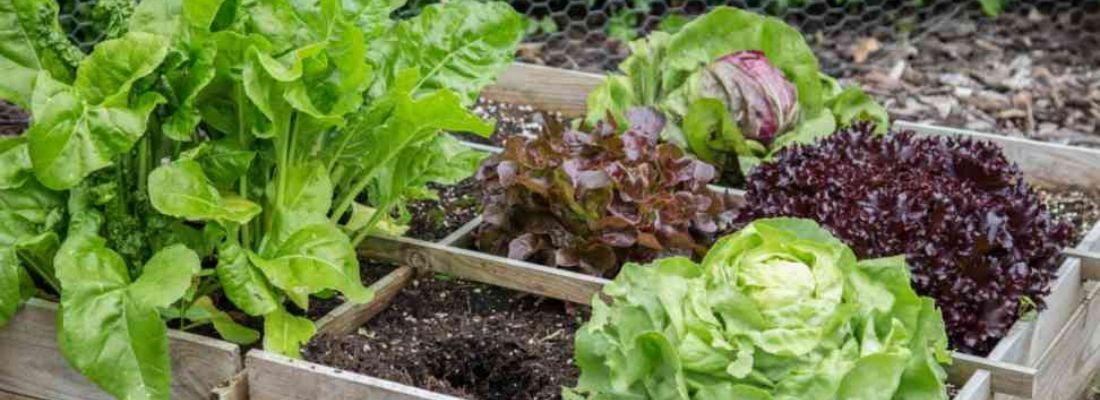
Growing your own fruit and vegetables is a fantastic skill to have. Not only that, but it can have an amazing effect on your wellbeing. Here’s everything you need to get started!
There’s lots of research to suggest that gardening is a wonderful outlet for the mind and body. A daily escapism from stress, gardening encourages us to take a step back and appreciate the world around us. It also helps to create a sense of achievement and the tangible results that come with gardening do wonders for our wellbeing. And, with the year we’ve just had we’ll take all the calm and comfort we can get!
So, where to start?
GROW THE FOODS YOU LOVE
The best foods to grow are the ones you enjoy eating! Make a list of the foods you would love to have at your fingertips. Add to this some kitchen staples or foods you eat often such as potatoes or herbs and you’re off to a bloomin’ great start!
LOCATION, LOCATION, LOCATION
Next, it’s time to think about where to grow your crops. We’d all love to be sunning ourselves somewhere right now and plants are no different, they also like soaking up the sun, albeit some more than others. Each plant is unique, but it’s safe to say they will certainly need a good amount of light. It’s also worth noting that you don’t need a huge amount of space to start growing. Many fruit and vegetables can be grown in pots, planters, buckets or bags. We would recommend beginning with growing in small pots, containers, or small raised beds. If growing outside, avoid areas of high traffic and make sure there is a good water source nearby or lugging that water halfway down the garden will become tiresome pretty quickly.
THE SECRET IS IN THE SOIL
Nutrient rich soil, free from pests and disease is a gardener’s best friend. If going with our recommendation of starting in smaller containers, it’s important to remember vegetables grown this way need extra water. They are also better grown in a compost mix as the soil might dry out too quickly. Larger pots and planters should be filled with a soil and compost mix (about 60/40). It’s also best to use organic plant food and ideally no pesticides. You can use crushed eggshells, crustacean shells, banana peels and so much more “waste” to increase the nutrient values in your soil. Using the correct soil to compost ratio for your specific plant plus some great plant feed will have you well on your way to your garden of dreams!
RAISED BEDS TO KEEP PLANTS COSY
Raised beds are also another great alternative to containers for those with additional space but who are still new to the growing process. They are easier to look after than plants growing directly in the ground. They provide better drainage (perfect for the gloriously wet Irish weather we all know and love.. ahem). Ultimately, they help keep your precious plants away from foot traffic and pets and are an easy height to work at.
HOMEMADE COMPOST- LESS WASTE MORE TASTE
If you have the space, then starting your own compost heap is a fantastic addition to your growing adventure. You’d be surprised at just how much of our daily waste can be repurposed to make your compost heap. Vegetable peelings, grass cuttings, weeds (especially nettles), old banana skins, apple cores, seaweed, coffee grinds, dead flowers, cardboard, straw, paper towels, toilet roll tubes, woody prunings, fallen leaves, shredded newspaper, spent potting compost, egg shells to name but a few! Composting can be done in a simple compost heap or in a compost bin. The bin is more effective as it retains heat and speeds up the process. An earth base allows drainage and access to soil organisms, but if you need to compost on a hard surface, then add a spaceful of soil to the compost bin. The micro-organisms (bacteria and fungi) that convert the waste to compost work best in constant conditions so position the bin in the shade and ensure it is not subject to any extreme moisture.
LET'S GET GROWING!
Although you can prepare beds at any time of the year, deep digging is best done now before the end of winter. This will allow the disturbed ground to settle before planting. You can start by de-weeding your planting area.
For raised beds
- Fill the bed with high quality topsoil to about 3 inches for the top.
- Remove twigs and stones.
- Add 2 inches of compost on top of the soil.
- Rack the top of the bed to smooth it out.
For Garden Beds
- Ensure you choose a relatively sunny area with some protection such as a hedge or wall.
- Remove existing vegetation like grass and weeds and cover the area in newspaper (4 of 5 sheets) or cardboard.
- It’s important to then assess your soil. You should be able to squeeze your soil into a ball and then crumble it easily. Soil with too much clay will not crumble, and a soil with too much sand will not squeeze into a ball. Adjust your soil if necessary by adding a few inches of beneficial compost to your new vegetable garden.
- Next, turn your soil; use a spade/shovel, or garden fork to turn the soil over. A spade or shovel may be the best to use for a very new and firm bed. Do this when it is damp but not waterlogged. Turn about 12 inches of soil and then top the area with 2-3 inches of compost (preferably organic) and turn once more. Rack the surface smooth.
For Containers
Ensure you have pots or containers and vegetable potting soil (preferably organic).
SOWING YOUR SEEDS
The general rule is to sow seeds twice the depth of the size of the seed itself, but always check the label on the seeds themselves. Seeds need light and water to germinate effectively so you need to keep it somewhere nice and sunny and warm. Use the right amount of water. You want to keep it moist at all times but not overwater it. Using a spray bottle or wide head watering can and not a heavy water stream. A sunny windowsill is a perfectly controlled environment for germination as it protects from pest and weather. A greenhouse can also be ideal but do check for pests regularly.
Hopefully we have helped start you on your growing journey. Keep an eye on our Sowing, Growing and Harvesting Calendar on our socialeach month for lots of tips and tricks on how to grow, sow and harvest a variety of fruit and vegetables. We would love to see your beautiful produce, tag us with #GROWWITHEATTO on any of the images you share!








